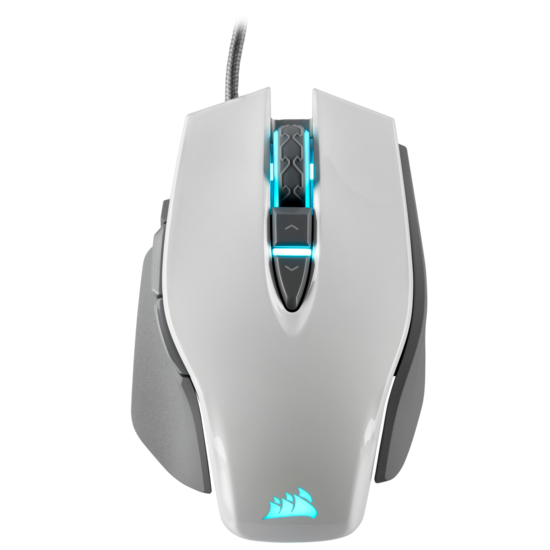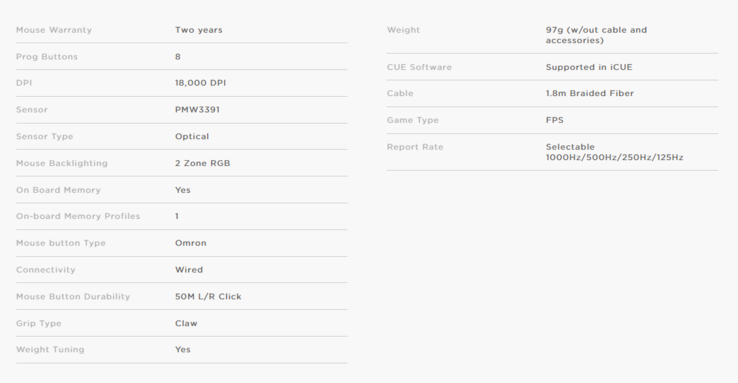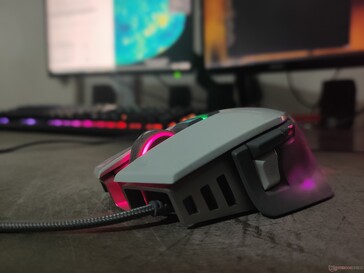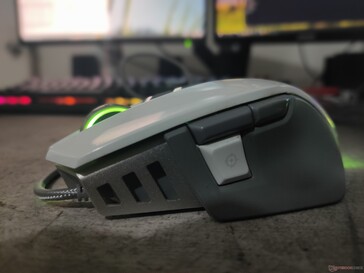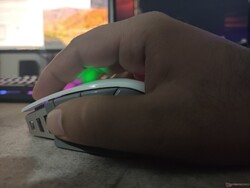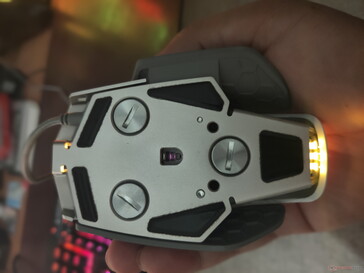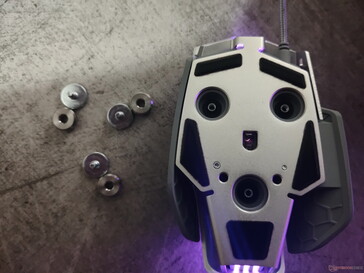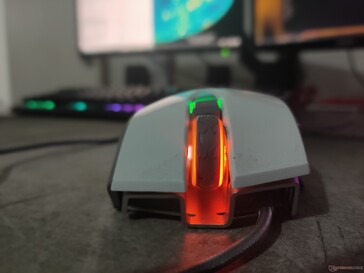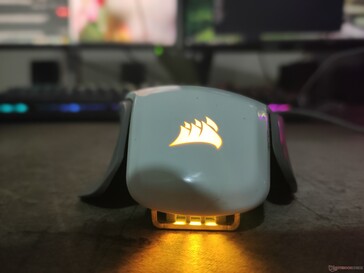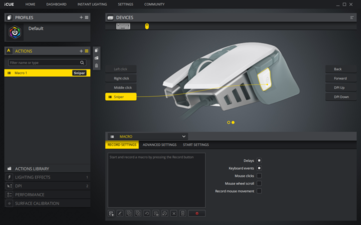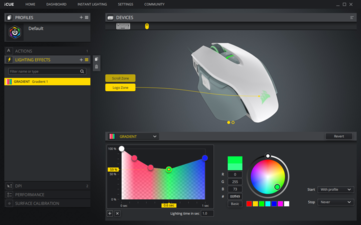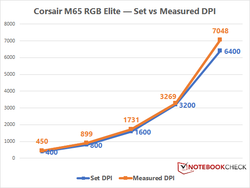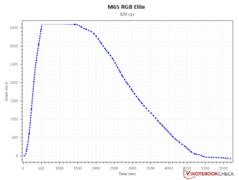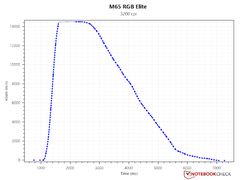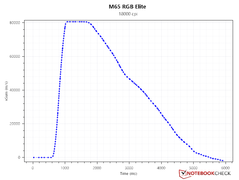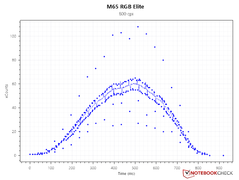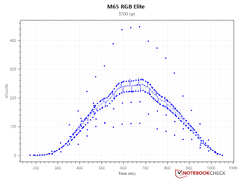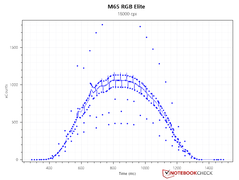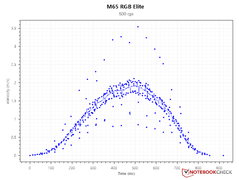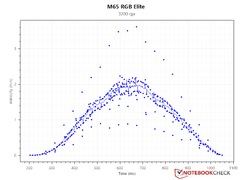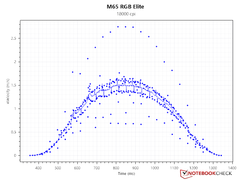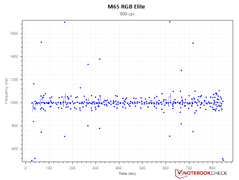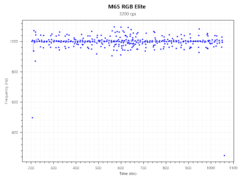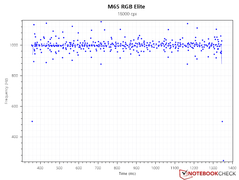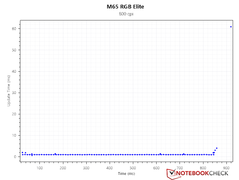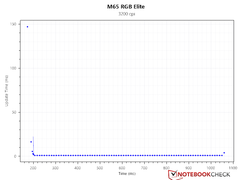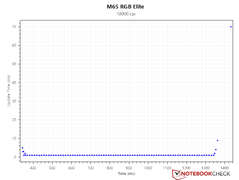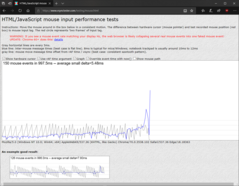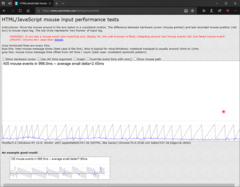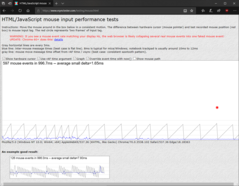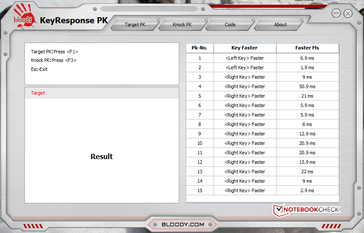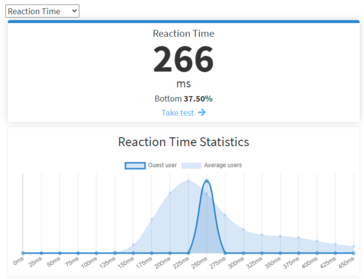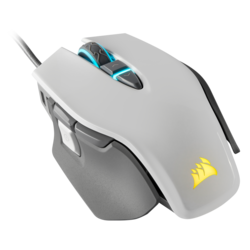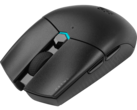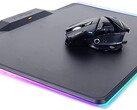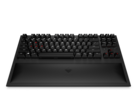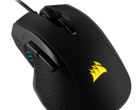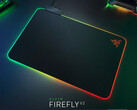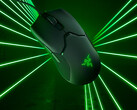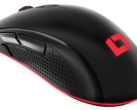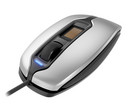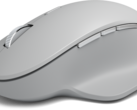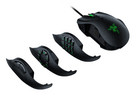Review: Corsair M65 RGB Elite tunable gaming mouse — Elite features at a competitive price
Corsair has a slew of products catering for gamers and the Corsair M65 RGB Elite tunable gaming mouse figures prominently among them. The M65 RGB Elite offers many features expected from a pro-level gaming mouse without breaking the bank. The M65 RGB Elite is built around an aluminum frame for easy handling without sacrificing durability. It offers a set of three tunable 6 g weights and a variety of customization options via the driver to cater for the needs of most gamers.
In this review, we will take an in-depth look into the M65 RGB Elite's overall design, software features, and raw sensor performance to see if the "Elite" moniker is really worth spending US$60 (US$40 on Amazon) on. The M65 RGB Elite shares a lot of specifications with the Corsair IronClaw RGB gaming mouse, which we reviewed recently. Check it out at the link below.
Specifications
The Corsair M65 RGB Elite sports a good feature set for the price. For starters, you get the high-end PMW3391 optical sensor, which is Corsair's variant of the PixArt PMW3389. The PMW3391 has a maximum resolution of 18,000 DPI, which can be configured in increments of 1 DPI for precise control. Various RGB and DPI settings can be stored onboard in one defined hardware profile.
Polling rate can be selected from 125 Hz all the way up to 1,000 Hz in the iCUE software. There are two RGB zones (one in the scroll wheel and another in the Corsair logo) and an RGB DPI indicator. RGB effects can be customized and synced with other Corsair peripherals such as the K70 MK.2 Rapidfire keyboard.
The M65 RGB Elite uses Omron switches with a rated lifespan of 50 million clicks for the left and right buttons. The middle scroll wheel requires a slightly higher actuation force but is easier to press than the IronClaw RGB. There are two DPI adjustment buttons beneath the scroll wheel for on-the fly DPI changes. The side directional buttons and the dedicated Sniper button are made of Kailh switches and their functions can be programmed within iCUE.
Design
The M65 RGB Elite's design suits claw grippers but is well-designed to accommodate most hand sizes. The body is built around an aluminum frame and is sturdy without any flex. All buttons are highly responsive and have different actuating forces depending on their purpose. For example, the Sniper button on the left side requires a higher actuation force than the norm, but this is by design as your thumbs normally tend to rest on the Sniper switch and you wouldn't want to activate it unnecessarily. Pressing and holding the Sniper button reduces the DPI to a lower value to allow for more accuracy and stability while taking in-game sniper shots.
While the main body of the M65 is glossy, the sides are given a matte finish to prevent slipping. There are no rubber grips like the IronClaw RGB, however. The 1.8 m braided cable is long-enough and most users may feel the need to use a bungee or tie the cable to prevent drag while usage.
There are five feet on the bottom and they offer a smooth glide with the least resistance. DIYers will be happy to know that the feet need not be peeled-off to disassemble the mouse.
Staying on the bottom, we get to see three built-in weight adjustments of 6 g each (1.5 g for the screw and 4.5 g for the actual weight). The overall weight of the mouse sans the weights and cable is 97 g, which should be comfortable for most users. The number of weights should cater to a pretty large gaming demographic although, mice such as the Logitech G502 and the Gigabyte Aorus M5 do offer more weight choices.
The M65 has only two RGB lighting zones both of which can be configured in iCUE. Of the two, the Corsair logo and the "mouse teeth" beneath it light up well, but they are mostly eclipsed by your hand during use, leaving only the scroll wheel's aurora to admire. Thankfully, the scroll wheel lighting is much brighter than what we saw with the IronClaw RGB.
Overall, the M65 RGB Elite is designed well, and it looks like the mouse can take quite a bashing from prolonged gaming sessions.
Software
The M65 RGB Elite can be used without having to worry about installing third-party drivers. That being said, using Corsair's iCUE software does come with certain advantages such as the ability to configure DPI settings, customize RGB effects, store a custom onboard profile, button programming, surface calibration, and more.
iCUE is not a lightweight piece of code by any means, and it does take some time to get used to. Fortunately, Corsair has made many tutorials available to help new users get to terms with the software. Do note that iCUE may not play well with your motherboard's RGB/fan tuning utility in certain situations, so in case of conflict configure the M65 in iCUE and uninstall the software.
Performance
The M65 RGB Elite was tested for sensor performance and accuracy. We used an AMD Ryzen 9 3900X-powered test system running on an MSI Prestige X570 Creation motherboard with 32 GB of G.SKILL DDR4-3600 CL16 RAM and a Gigabyte RTX 2080 Super OC GPU. Windows 10 1909 with the latest patches was installed on a Gigabyte Aorus NVMe PCIe Gen4 SSD. The latest versions of iCUE and the M65's firmware (v3.24) were installed prior to testing. MouseTester Reloaded v1.5.3 developed by dobragab was used for most measurements, which were performed on a fresh boot with only OneDrive, Windows Defender, NVIDIA Control Panel, and Corsair iCUE running in the background.
Corsair provided us with an MM350 Gaming Mouse Pad - Extended XL (930 x 400 mm). The company says that the M65 RGB Elite is pre-calibrated for this particular surface. For other surfaces, you can use iCUE's Surface Calibration tool, although we never felt the need to do so for regular use. Before starting measurements, we disabled "Enhance pointer precision" and "Angle snapping" within iCUE. Pointer speed was set to 6/11 in Windows and polling rate was set to 1,000 MHz / 1 ms.
DPI Variation
While high DPI numbers look great on paper, the quality of the CMOS sensor used is more important. Most pro-gamers hardly set the DPI above 800. That being said, having the flexibility to choose higher DPI numbers means less physical hand movement and a smoother cursor.
Due to various factors such as sensor height from the surface, manufacturing, firmware, etc., the actual DPI can deviate from the set value in the driver. We measured this DPI variation using MouseTester Reloaded at five different DPI settings by moving the mouse over a fixed 10 cm distance. The measured DPIs were taken in triplicate, averaged, and plotted against the values defined in the driver.
The measured DPI values seemed to vary between 2 to 12.5%. It is not bad by any means, but we feel there is still some scope for fine-tuning within the firmware for even tighter values, especially towards the higher DPI ranges. That being said, we do not see any reason for concern while gaming as we didn't find ourselves having to retrain our reflexes at the default sensitivity settings in games such as PUBG, Overwatch, and Battlefield V.
Sensor Performance
We tested several sensor parameters of the M65 RGB Elite at 800 DPI (commonly used for gaming), 3,200 DPI (maximum needed for desktop use), and 18,000 DPI (sensor maximum) resolutions.
Speed-rated Accuracy Variance (SRAV)
Measuring SRAV lets us know if the sensor has any inherent acceleration. Having built-in sensor acceleration can negatively impact your gaming experience, especially if you are trained for certain quick reflexes.
We observed that the M65 lacks any inherent acceleration as is evident by the very good SRAV curves below at all tested DPIs when accelerated and decelerated back to origin. Whatever slight displacement is seen in the graphs is due to human error rather than of the sensor itself.
Sensor Counts, Perfect Control Speed, Polling, and Stability
We also tested other sensor parameters such as raw counts, perfect control speed (PCS), polling rate and update interval consistency, and overall stability. Do note that garbage data towards the start and end of measurement has been trimmed for sake of presentation.
Sensor counts: We find that the M65 RGB Elite is able to register all counts along the tracking path. Although we do find a few counts straying away from the path, the vast majority of them lie close to the central curve. No breaks in the curve are observed, indicating that the M65's sensor is capable of consistent tracking at all DPI settings.
Perfect Control Speed (PCS): PCS is the maximum speed at which the mouse can be moved without losing tracking. The PMW3391 sensor has a PCS of 10.16 m/s. The maximum PCS we could hit was 3.5 m/s at 800 DPI, but 2 m/s seems to be a sweet spot for the M65. The PCS does not seem to vary much across resolutions save for the 0.5 m/s lower speed at 18,000 DPI.
Polling Rate, Update Interval, and Stability: The polling rate was set to 1,000 MHz with a 1 ms update interval. The M65 RGB Elite showed consistency in polling rates and update interval times with very minor deviations, which indicates a stable performance.
Input Lag and Response Time
The M65 does show some input lag at 800 DPI. However, at 5.48 ms, it is lesser than the normal value of 8 ms for conventional desktop mice. The lag seems to reduce with increase in DPI. Practically, the 5.48 ms did not affect gameplay in any manner.
Finally, we used Bloody's KeyResponsePK to see if there's any difference in the response times between consecutive left and right clicks. We noticed very low response times between mouse clicks, implying that button actions will be quick in most games. We used Human Benchmark to calculate the average reaction time and scored a decent 266 ms. Do note that these results are highly variable and are entirely dependent on the user.
Verdict
We have been using the Corsair M65 RGB Elite for several months now and there's a whole lot to like about it. Corsair has made a near-perfect gaming mouse for US$60 (you can now get it for US$40 on Amazon) that ticks most boxes. The build quality is good, the mouse fits snugly in the hand, and the switches respond well with minimal actuation. The stock feet glide well and the tunable weights are a nice addition.
The PMW3391 is a top-of-the-line sensor from PixArt, and it managed to show good consistency in all tests across all tested resolutions. That being said, we do think there is still some scope for firmware-level adjustments given that we see significant DPI divergence at higher values.
Corsair's iCUE utility offers a one-stop shop to customize the M65 to your heart's content. While the software itself runs well, it does have a learning curve and is somewhat heavy on the resources. RGB lighting on the mouse is limited to only two regions, but it is well-done with enough brightness, vivid colors, and smooth transitions.
Packing a nice feature-set at a relatively affordable price, the Corsair M65 RGB Elite does not have many negatives, making it a great choice for both casual and discerning gamers alike.
Looking at the competition, the Logitech G502 Hero (US$80) and Corsair's own Nightsword RGB (US$70) are other options that come with a few extras such as additional programmable buttons and weight combinations. While the choice of a gaming mouse is highly subjective and depends largely on user preference, the Corsair M65 RGB Elite does deserve a consideration if you wish to add some "Elite" hardware to your gaming arsenal.


 Deutsch
Deutsch English
English Español
Español Français
Français Italiano
Italiano Nederlands
Nederlands Polski
Polski Português
Português Русский
Русский Türkçe
Türkçe Svenska
Svenska Chinese
Chinese Magyar
Magyar